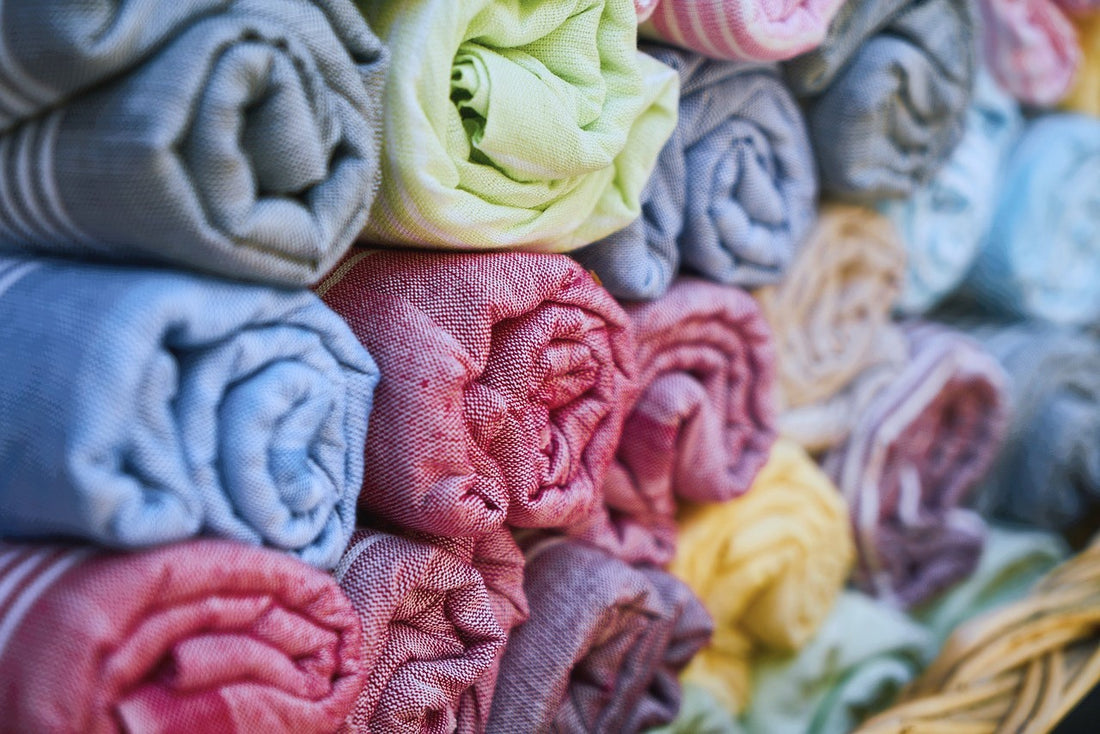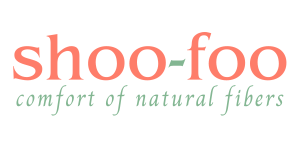
GET TO KNOW YOUR FIBERS - PART 2: Rayon, Spandex, Polypropylene and PET.
SHOO-FOO TeamShare
Welcome back to our journey of exploring the world of synthetic fibers! In this issue of "Get to Know Your Fibers," we'll focus on the properties and impacts of four more commonly used synthetic fibers: rayon, spandex, polypropylene, and polyethylene terephthalate (PET).
Rayon (Viscose): The Eco-Friendly Alternative
- Introduction: Rayon, commonly known as viscose, is a natural cellulose-based manufactured fiber, primarily made from wood pulp. Due to its softness, absorbency, and drape, it is considered the best cloth for clothing and many other home textiles.
- Production: In the manufacturing of rayon, it is subjected to a process where cellulose extracted from the parent material is chemically altered into a liquid solution, which is further incorporated in the form of filaments. While rayon has the benefits of comfort and versatility, its production comes with environmental and health effects in cases of lack of sustainable management.
- Benefits: Rayon's natural feel, absorbency, and dyeability make it versatile for many applications, from clothing to medical supplies. Its biodegradability under certain conditions adds to its appeal as a more sustainable alternative to some synthetic fibers.
- Environmental Impact: Ideally, wood pulp has to be harvested sustainably and manufactured in an environmentally responsible way before the environmental cost of rayon can be substantially negated. Much work has been done in improving production methods and finding eco-friendly alternatives.
Spandex (Elastane): Stretch and Support
- Introduction: Generally known under the trade names Lycra and elastane, the fiber is highly stretchy and exhibits high resilience. It forms the foundation of activewear, swimwear, and other body-hugging clothes for their need for support and flexibility.
- Production: Spandex is manufactured through a very intricate chemical process of polyurethane polymerization followed by extrusion. It may offer qualities of unparalleled stretch and recovery, but it could also spell out some health and environmental risks because of its manufacture.
- Benefits: The stretch, strength, and resistance from body oils and perspiration are the outstanding characteristics of spandex in activewear, as well as undergarments. Its ability to enhance comfort and performance means it is part of many different applications.
- Environmental Impact: As a synthetic fiber, spandex faces the same problems as synthetic fibers from microplastic pollution during washing and complications with end-of-life disposal. There are practically no methods for recycling spandex, so it is highly imperative to substitute it with a sustainable alternative.
Polypropylene: Lightweight and Moisture-Wicking
- Introduction: Lightweight synthetic fiber that is highly favored due to not only its moisture-wicking capability but also its durability. It is thus used extensively in sportswear and outerwear but also in several industrial applications where moisture wicking is necessary.
- Production: Polypropylene is produced by polymerizing propylene gas, then melting and extruding the resulting polymers into fibers. While it requires fewer resources as compared to other synthetics, environmental concerns will still be relevant to its manufacturing.
- Benefits: Moisture-wicking, fast-drying, and thermal insulation. Polypropylene is used in functional wear for sports and outdoor use, as well as in reusable shopping bags; its resistance against chemicals widens its applicability.
- Environmental Impact: Polypropylene is recyclable; however, a functional cycle for proper recycling infrastructure of the polypropylene in synthetic fibers has not yet been effectively put in place; some mechanisms have been established that may take up this task, reducing the environmental impact.
Polyethylene Terephthalate (PET): From Plastic Bottles to Fabrics
- Introduction: A widely employed form of synthetic fiber from recycled plastic bottles is none other than polyethylene terephthalate, well-known as PET. Considerable strength, durability, and recycling friendliness make it the supreme candidate for textile usage and numerous other products.
- Production: Manufacture of PET involves the reaction of ethylene glycol with terephthalic acid to yield a flexible polymer that can be melted and extruded into fiber. It is more eco-friendly than virgin polyester since it's made of recycled sources.
- Benefits: PET offers strength, rigidity and moisture resistance in all types of applications ranging from clothing to home textiles. As mentioned above, using recycled material ensures that resources are preserved and wastes minimized.
- Environmental Impact: Recycling of PET reduces the need for virgin resources and minimizes the amount of plastic taken to landfills and oceans. However, the remaining challenges lie in addressing microplastic pollution and closing the loops of the recycling systems.
Overall Environmental Impact of Synthetic Fibers
As we conclude our exploration of synthetic fibers in "Get to Know Your Fibers," it's essential to reflect on their overall environmental impact. While these fibers offer numerous benefits in terms of durability, versatility, and performance, they also pose significant challenges to the environment throughout their lifecycle.
- Production Impact: The production of synthetic fibers involves energy-intensive processes, reliance on non-renewable resources, and the use of toxic chemicals. From petroleum extraction for polyester to the polymerization of polyurethane for spandex, each step contributes to greenhouse gas emissions, air and water pollution, and resource depletion.
- Post-Consumption Impact: Once garments made from synthetic fibers reach the end of their lifecycle, disposal becomes a pressing issue. Most synthetic fibers are non-biodegradable, contributing to landfill waste and taking centuries to break down. Additionally, the shedding of microplastics during washing poses a significant threat to marine ecosystems and human health.
- Microplastic Pollution: One of the most pressing concerns associated with synthetic fibers is the release of microplastics during washing. These tiny particles, measuring less than 5mm in size, can enter waterways and oceans, where they accumulate in sediments and are ingested by marine organisms. Microplastics have been found in various marine species, including fish and shellfish, and can ultimately enter the human food chain.
- Resource Depletion: The production of synthetic fibers relies heavily on non-renewable resources, such as petroleum and natural gas. As global demand for textiles continues to rise, the depletion of these finite resources becomes a growing concern. Sustainable alternatives and recycling initiatives are essential for reducing reliance on virgin materials and conserving resources.
- Health Implications: While much of the focus on synthetic fibers' environmental impact centers on pollution and resource depletion, there are also health implications to consider. The production of synthetic fibers often involves the use of toxic chemicals, posing risks to workers' health and surrounding communities. Additionally, exposure to certain synthetic fibers, such as polyester and nylon, can cause skin irritation and allergic reactions in sensitive individuals.
Towards a Sustainable Textile Future
While synthetic fibers offer affordability and versatility, their environmental and health impacts are significant. We, as consumers, can drive demand for sustainable alternatives by choosing recycled textiles, supporting responsible brands, and advocating for change. Let's educate ourselves, make informed choices, and promote sustainability in all aspects of our lives.
And as you know, we at SHOO-FOO believe in the soft power of natural fibers 🌿

